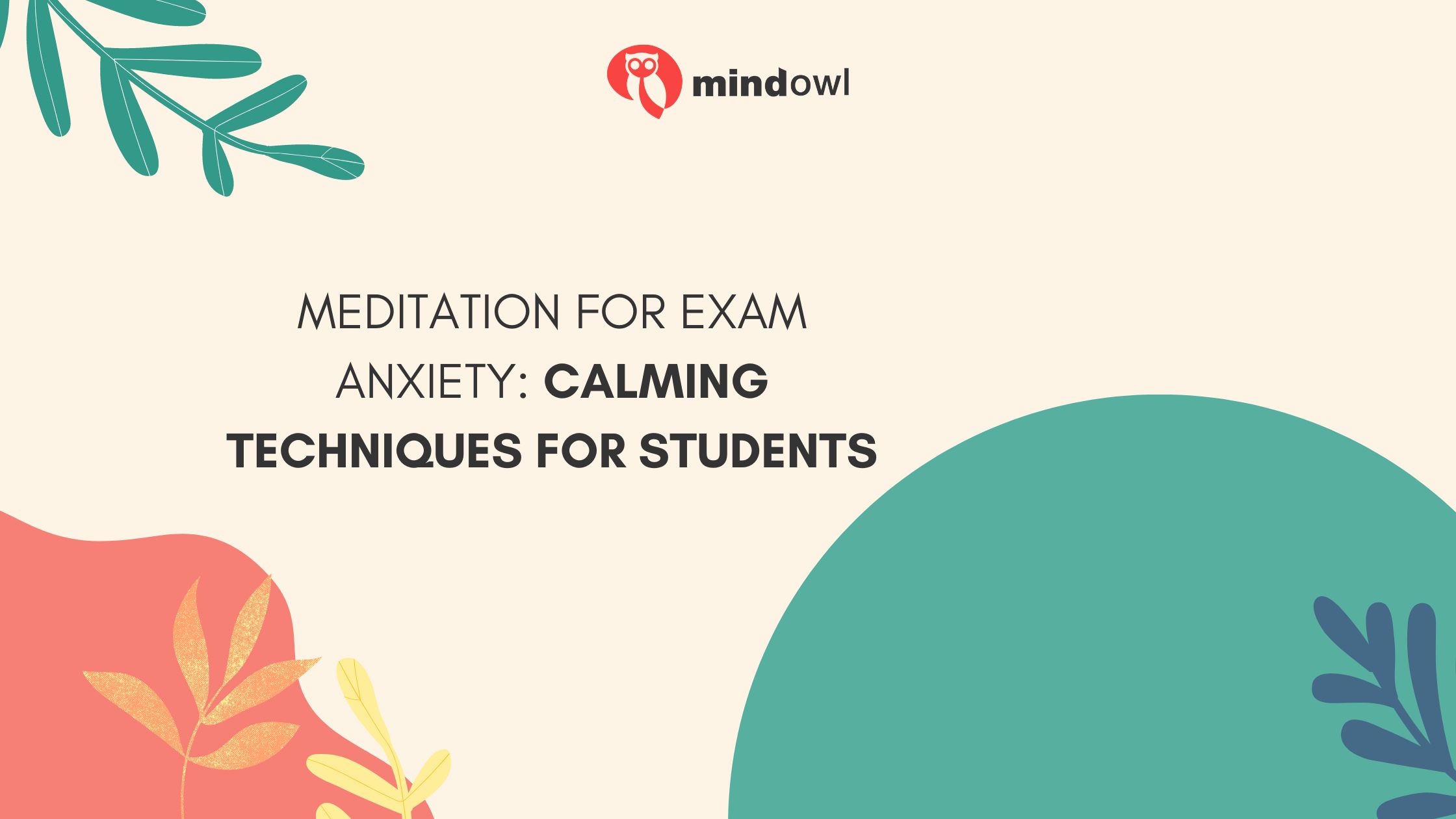Exams can be a significant source of stress for students, causing anxiety and nervousness that can hinder their performance. The pressure to excel, coupled with the fear of failure, can create a cocktail of emotions that overwhelms even the most prepared individuals. In such situations, meditation can emerge as a powerful tool to calm the mind, reduce anxiety, and enhance focus. By incorporating meditation into their daily routine, students can navigate through the exam period with greater ease and confidence. This article explores various meditation techniques tailored specifically to combat exam anxiety, enabling students to unlock their true potential.
Understanding Exam Anxiety: The Struggle Is Real
Before delving into the world of meditation, it’s crucial to grasp the impact of exam anxiety on students’ mental well-being. Exam anxiety is more than just pre-test jitters; it’s a persistent state of unease that affects concentration, memory, and overall performance. Sweaty palms, rapid heartbeat, and racing thoughts are common symptoms that students experience when facing exams. Left unchecked, these symptoms can lead to panic attacks, self-doubt, and even avoidance of exams altogether. Furthermore, the stress of multiple assignments just before the exam season can also add to exam stress. Students can take help from professional writers at grabmyessay.com, who can write their assignments for them. This can help them reduce stress.
Mindfulness Meditation: Anchoring to the Present
One of the most effective meditation techniques for managing exam anxiety is mindfulness meditation. This practice involves paying attention to the present moment without judgment. By focusing on the breath, bodily sensations, or any other anchor, students can anchor themselves to the here and now, letting go of worries about the past or future.
To start, students should find a quiet space and assume a comfortable posture. They can then close their eyes and take deep breaths, feeling the air entering and leaving their lungs. As thoughts arise, students can acknowledge them non-judgmentally and gently redirect their focus to the chosen anchor. Through regular practice, this technique can help students develop a calmer and more focused mind, enhancing their ability to study and perform well in exams.
Guided Visualization: A Mental Rehearsal for Success
Guided visualization is a meditation technique that involves creating vivid mental images of success and accomplishment. By mentally rehearsing the process of studying effectively, staying calm during exams, and achieving desired outcomes, students can program their minds for success.
To practice guided visualization, students can sit comfortably, close their eyes, and begin to visualize a scenario in which they are confidently preparing for the exam. They can imagine themselves feeling calm, focused, and in control. While visualizing, students should engage all their senses, creating a multidimensional experience. By consistently engaging in this practice, students can reduce anxiety and boost self-confidence, preparing themselves mentally for the challenges that lie ahead.
The Power of Meditation: An Oasis of Calm
Meditation has been practiced for centuries and has gained widespread recognition for its ability to promote relaxation, mindfulness, and emotional balance. By engaging in meditation, students can create a serene space within themselves where the anxieties and pressures of exams lose their grip. Regular meditation practice can rewire the brain, making it more resilient to stress and increasing cognitive flexibility.
Loving-Kindness Meditation: Cultivating Self-Compassion
Exam periods can be incredibly demanding, leading students to be overly critical of themselves. Loving-kindness meditation, also known as metta meditation, can be a transformative practice for cultivating self-compassion and fostering a positive mindset.
To practice loving-kindness meditation, students can sit comfortably, close their eyes, and repeat phrases of well-wishes towards themselves and others. For instance, they can silently recite phrases like, “May I be happy, may I be healthy, may I be at ease.” This practice helps students develop a sense of self-acceptance and nurtures a kinder inner voice, which can be instrumental in managing exam-related stress.
Final Thoughts
As students gear up for exams, incorporating meditation into their daily routine can be a game-changer. By practicing mindfulness meditation, guided visualization, loving-kindness meditation, or walking meditation, students can effectively manage exam anxiety, improve focus, and bolster self-confidence. As meditation becomes an integral part of their lives, students will not only excel academically but also gain invaluable tools for navigating stress throughout their lives. Remember, taking time for self-care and mental well-being is not a luxury but a necessity, and meditation can be the key to unlocking a more serene and successful journey through the academic challenges of life.
A note about the author – Ewan Jennings
Ewan Jennings is a yoga instructor. He has undergone multiple teacher training programs and also specialized in alternative healing techniques such as meditation therapy. Ewan spends his time teaching students different meditation techniques to reduce stress and cope with a rigorous schedule. He is popular among students at different levels of study for her compassion and expertise in meditation techniques.
MindOwl Founder – My own struggles in life have led me to this path of understanding the human condition. I graduated with a bachelor’s degree in philosophy before completing a master’s degree in psychology at Regent’s University London. I then completed a postgraduate diploma in philosophical counselling before being trained in ACT (Acceptance and commitment therapy).
I’ve spent the last eight years studying the encounter of meditative practices with modern psychology.


